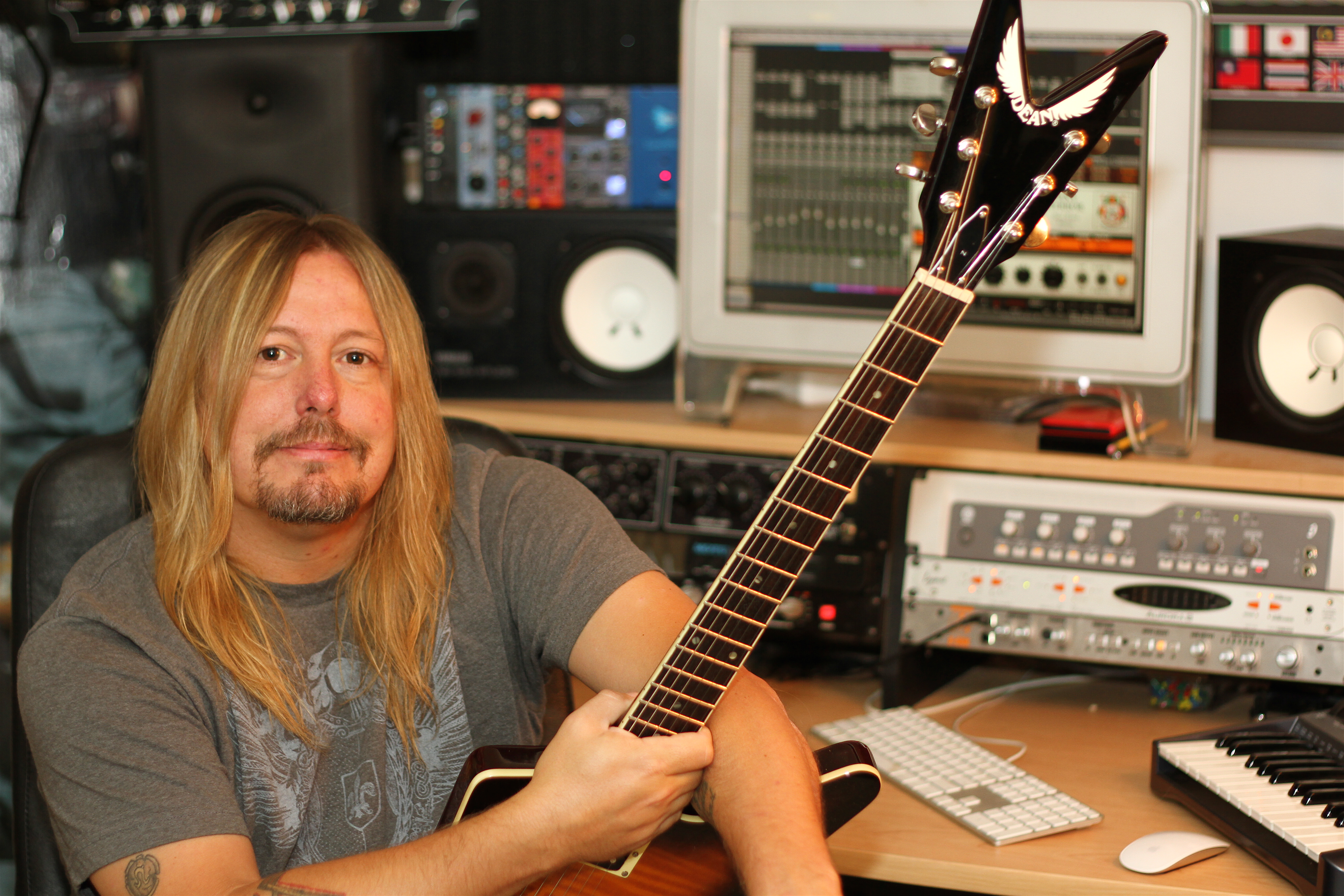Get Into the Box, Part 2: Know Your Tone … Your Real Tone

Just to reflect for a moment: In part one of this column, my focus was on recording technique and not your actual tone.
One thing I mentioned but I don't think I stressed enough is that while you can use AmpliTube and other apps as real-time plug-ins, I personally don’t recommend it. On one hand, you get the amazing ability to change everything from amp model to mic placement long after you've captured the perfect take, right into the final stages of mixing. The options can be endless — and to me, that’s a problem. You can flip your full-blown metal song all the way into a rockabilly song with this kind of power, but often it leaves you with too many options!
Since most people have home studios and aren't paying for studio time anymore, you can find yourself mixing, remixing and second guessing the heart and soul right out of your track. I always "print” my take: My guitar is sent into an aux track, the plug-in is inserted into that aux track, and it’s then routed to a separate audio track to which the tone I’m using is permanently recorded.
Making music is about committing; I can't stress enough how much time you can waste and magic you can lose if you don't just go for it. I've seen people start records that take so long to finish that the record is rendered utterly irrelevant because the technology, tonality and general business trend in music passed them by. Committing to your track is the first choice you make in capturing the nuances in your playing, as well as declaring to the world exactly how you sound.
That said, you must have good tone to start with. To do this, you must understand what it is you’re hearing through your studio monitors. In part one of this column, I mentioned that I'd been using emulators for a decade. It occurred to me at that moment that there’s a whole generation of guitar players and aspiring producers who may have never actually placed a microphone in front of an amplifier! So it’s time to to get "out of the box" for an experiment before we get back "into the box."
The purpose of this exercise is to understand that the sound of your amp directly in front of you is not at all what it sounds like coming through a pair of studio monitors. If you’re trying to get the emulator to sound exactly as you hear your amp, you’re chasing the impossible. If you manage to get close, it certainly will not sit in your mix the way guitar tracks sit on your favorite records. The science in all of this has to do with everything from frequency response to air pressure, and that’s a whole another column!
So, first thing's first. Plug your guitar into your amp, turn it up and dial in your perfect tone. Find a mic (an SM57 fits the bill perfectly). Put it in front of your amp, plug it in and arm a track. Give it your best riff and listen to the difference! Studio monitors simply do not reproduce the same frequency response or tonality as the amp alone, and the added tonal characteristics of the mic along with the proximity and angle of its placement all have a drastic affect on what you hear as a recorded guitar sound.
All the latest guitar news, interviews, lessons, reviews, deals and more, direct to your inbox!
Mic placement is the big variable in all of this. Your options are "on-axis," meaning the mic is put straight in front of the speaker, and "off-axis," which means you aim the mic at a 45-degree angle toward the speaker. Most emulators have this option available. After you've heard the differences and have a better understanding of what you hear through monitors, try altering your tone for a moment by using less gain.
Why on earth would you do that? It can be a little hard to understand at first, but everything in an audio chain adds gain, and that includes the microphone. A big part of the difference between what you hear in front of your amp and what is produced by the monitors is the added gain of the mic. When you then begin doubling guitars as discussed in part one, you will be stacking more and more gain. Sometimes it takes only a little change; if you normally set your gain on 10, try backing it off to 7 or 8. It may be a little harder to play at first (because we all know that high gain is the great hider of mistakes), but in the end this practice will give you the added bonus of making you a better player.
OK, so you have a mic in front of the amp, backed your gain off and doubled a guitar track. Even if your results are different than you originally envisioned, you should now have a much better understanding of what AmpliTube and other emulators are trying to reproduce. The trick now is to "get back in the box" and apply all of those things you found you liked in your plug-in, balanced with the new knowledge of what you actually hear.
The beauty of music lies in the wide range of opinion, but it never hurts to educate yourself In the what's how's and why’s of your craft. Hope you find this helpful. See ya next time!
Right now Pete is on tour with Bret Michaels. Check out www.bretmichaels.com for tour dates and be sure to stop by the official Pete Evick Facebook page at www.facebook.com/PeteEvickBMB to learn more about Pete.
